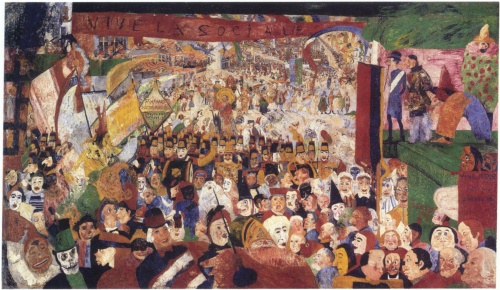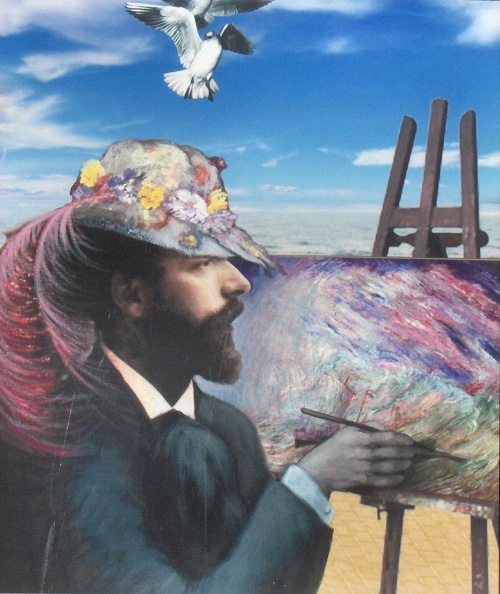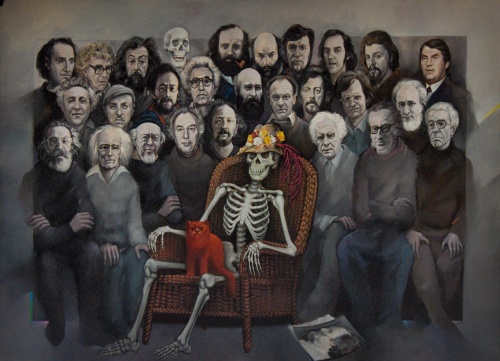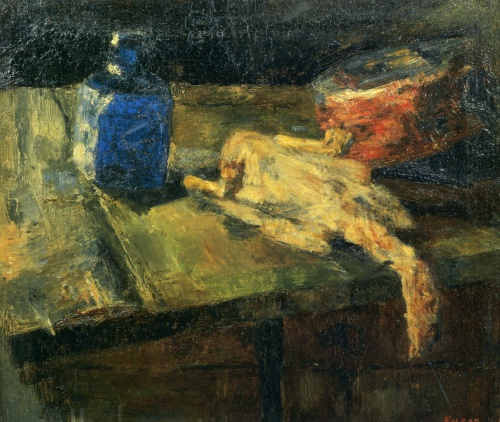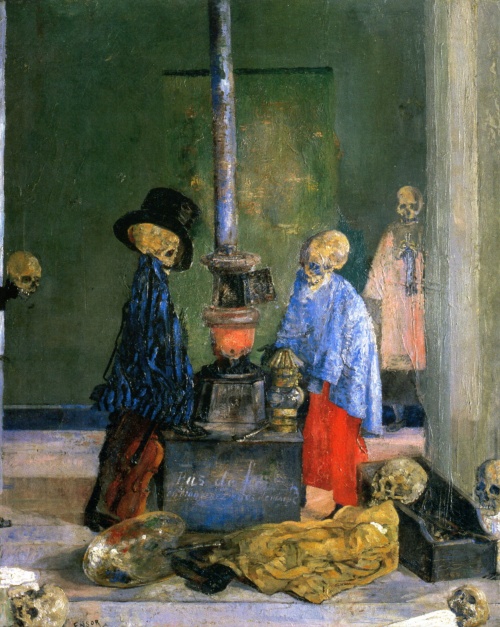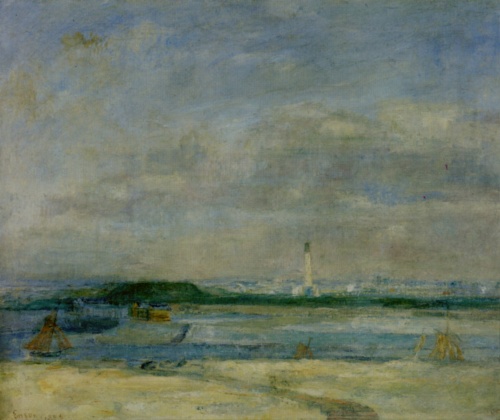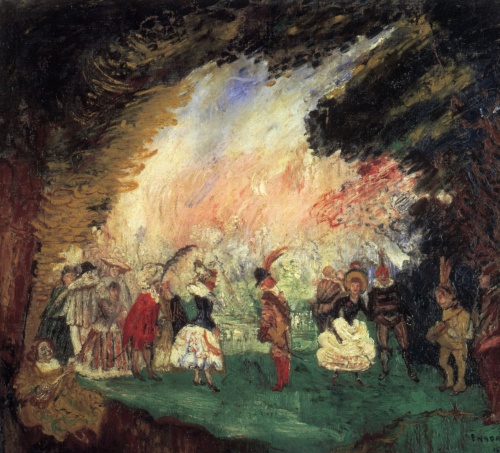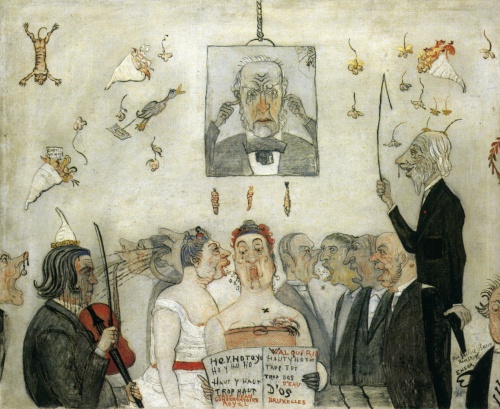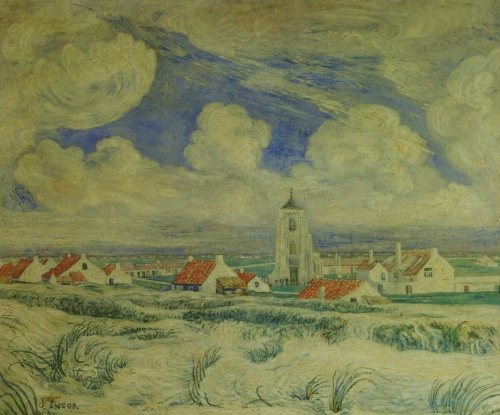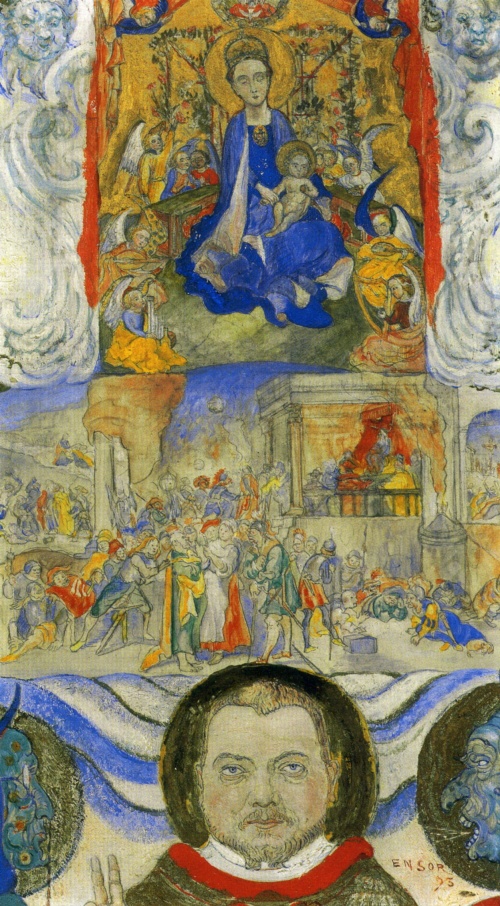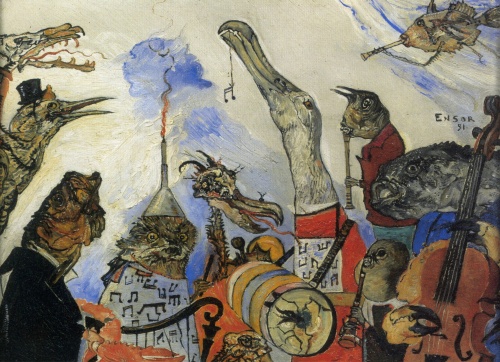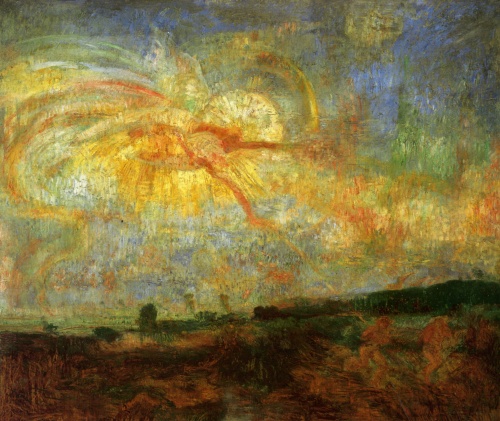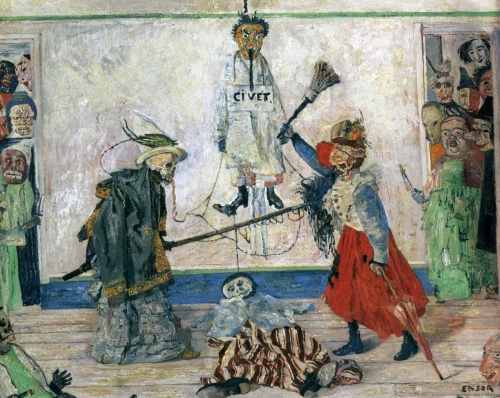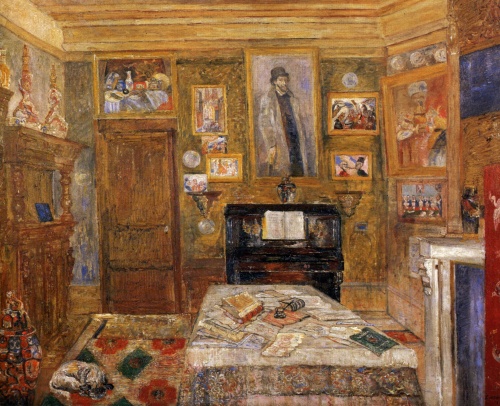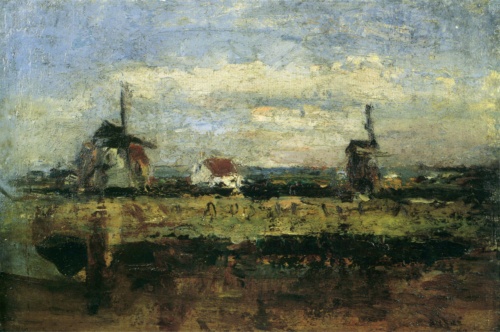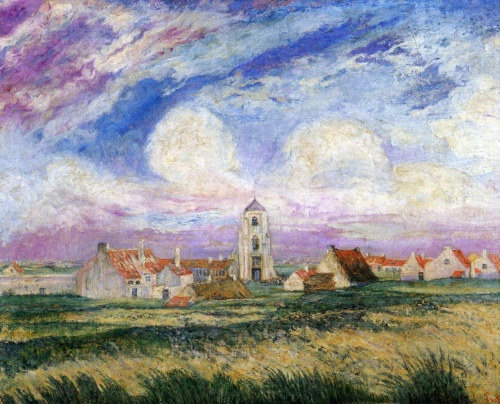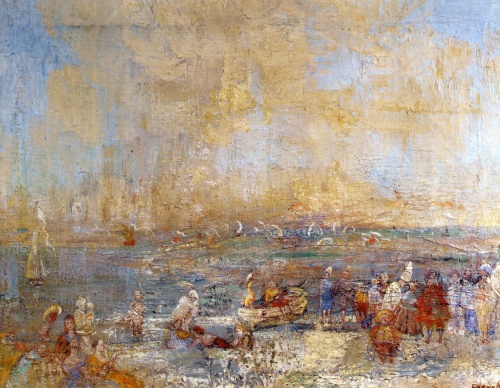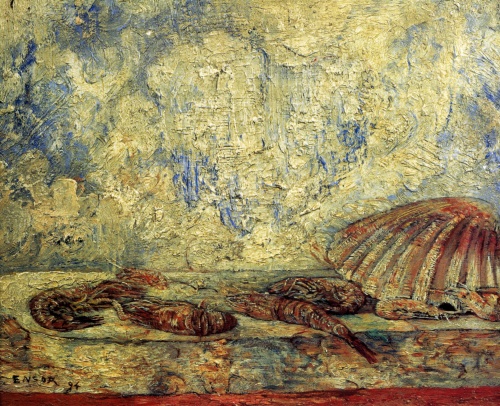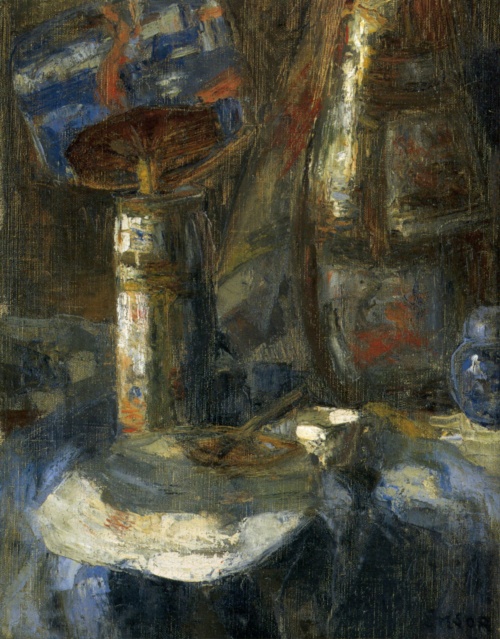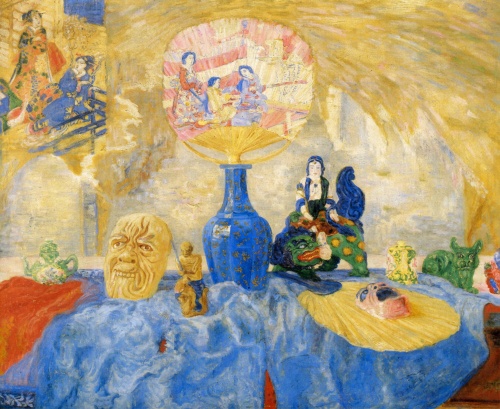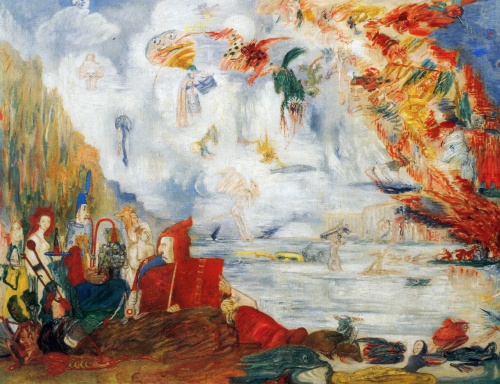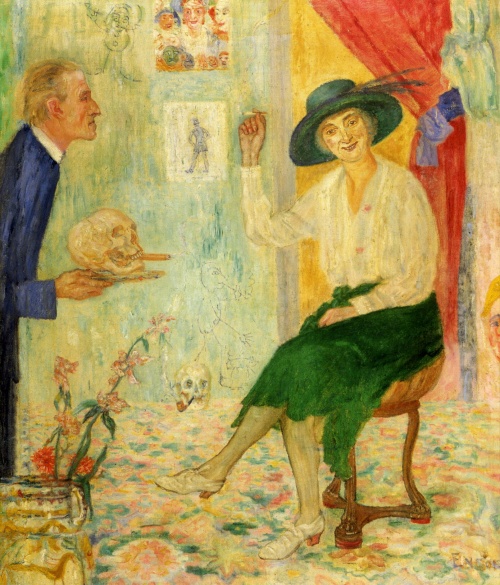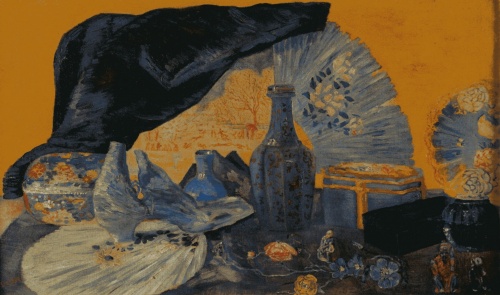James Ensor | XIX-XXe | James Ensor (225 works)
James Ensor (eng. James Sidney Edouard, Baron Ensor, April 13, 1860, Ostend - November 19, 1949, ibid.) - Belgian symbolist artist, graphic artist and painter. One of the greatest representatives of avant-garde artists of the 20th century.
The Encyclopedia calls James Ensor an outstanding symbolist artist, one of the greatest representatives of avant-garde artists of the 20th century. But apart from these truisms, we learn nothing about him from the encyclopedia, and yet he had an interesting biography, which, of course, was reflected in his work.
James Ensor was born on April 13, 1860, in the resort town of Ostend, on the shores of the North Sea. It's a stone's throw from here to England. However, James did not need to travel overseas to meet the inhabitants of Albion. England was present in his home - his father was English and his mother Flemish. My father, an engineer, came to Ostend to unwind, met the owner of an oyster shop here, where they also sold all sorts of souvenirs - oriental trinkets, carnival masks, and married her, but soon left for America on business, suffered a fiasco there, took to drinking and died on the way to Europe. So James hardly knew him. But he was very attached to his mother and helped her in the shop.
Ensor showed an early talent for drawing and took lessons from two artists in Ostend. Since the age of 15, he has been painting small views of the city's surroundings on cardboard, which accurately convey the atmosphere of the area. In 1877-1880, Ensor attended the Academy of Fine Arts in Brussels, where he studied mainly with its director Jan Portals, who introduced Orientalism to Belgian art. Realizing that formal education was not suitable for him, Ensor carefully studied the old masters, making numerous sketches from the works of Hals, Rembrandt, Goya, Callot as well as Turner, Daumier, and Manet. In 1879, the “dark period” of his work began, which would last until approximately 1882. At this time, he painted three small self-portraits, which are characterized by an alarming sharpness of vision, emphasized by deliberate impasto.
The Belgian version of impressionism, which placed more emphasis on halftones than clear colors, softens the bourgeois interiors of Ostend. The same realism and mastery of execution characterize Ensor’s still lifes created in those years
In 1882, the lightening of the palette was accompanied by a rapid evolution of the very spirit of the artist’s creativity. Ensor, suffering from the mediocrity of the cultural environment of his hometown, finds shelter and understanding in Brussels with Ernest and Mariette Rousseau, who became the first buyers of his paintings. He begins to exhibit, although not without difficulties, and takes part in several exhibitions. In 1884 he became one of the founders of the XX group. For ten years, it was this society that set the leading tone in the Belgian artistic and cultural environment. Ensor later argued that, regardless of the French traditions, he was trying to convey the work of light in a new radical form. He exhibited canvases of landscapes and interiors under the title “impression”. Thus, he deliberately emphasized his commitment to the new direction of the Parisian avant-garde. His sensitive and subtle worldview reveals, transforms and liberates light, form and color.
The multifaceted artist works sometimes freely, sometimes condensed, but all his works testify to the gift of sensory perception. Ensor avoided happy or sentimental subjects, so conservative critics and art lovers considered the artist's work insufficiently meaningful, witty or moving.
Masks occupy a special place in the themes of his paintings. The mask appeared in 1879 as an attribute of the carnival, but the most significant paintings on this topic were created in 1887-1891.
Ensor disappeared - as if in an old attic, behind the souvenir masks that were sold in his parents' shop. “I happily hid in solitude, where the world was ruled by a powerful and sparkling mask. The mask screams to me: Freshness of tone, bright facial expressions, lush decor, uncontrollable movements, delightful vibration!” His paintings are like a theater curtain hiding the darkness of an empty stage. The artist - a skeleton in a work jacket - tries to sketch the abyss that has opened up to him, as if knowing in advance about the events of the next century. Here he is - in the center of a mask carnival, in another picture - spying on fighting skeletons sharing one corpse.
Again “macabre”, one could say - only if all these images were not quotes from Bosch, Goya, Rembrandt. Ensor irrevocably disappeared behind “delightful vibrations,” behind masks and other people’s statements, he left the viewer standing in bewilderment in front of a sensual painting that says little to the mind.
In 1887-1890, Ensor painted religious paintings, marked by boldness and rich tones, an irrealistic manner and moving space.
"The Entry of Christ into Brussels"
The painting “The Entry of Christ into Brussels,” rejected by the “XX” group, reflects the whole essence of Ensor’s work, but here satirical causticism is not combined with captivatingness. In the picture we added to the religious plot
Lena mask theme. The canvas was preceded by six large charcoal studies entitled “Halos of Christ or the sensitivity of light.” The painting is a development of the third “halo” - “Living and radiant entrance to Jerusalem.” But the artist significantly changed the somewhat mystical and symbolist sketch. In a way, Ensor here settles scores with the society in which he is forced to live. This is expressed in the form of Flemish morality books of the 16th century. Bosch, Bruegel and the mannerists in which the biblical theme coexists with social satire. The fragile and miniature figure of Christ is like a glimpse of serenity that is carried away by a huge, agitated crowd. The faces in the foreground look like masks and symbolize lies. The rough texture and variegation of carnival masks allowed the artist to expand the expressive means of painting with dissonance of colors and grotesque exaggerations. Ensor wrote: “The mask gives me freshness of tones, super-sharp expressiveness, lush decoration, unexpected broad gestures, chaotic movements, exquisite restlessness.” Ensor's best paintings after 1888 continue the theme of the entry of Christ.
The Entry of Christ was an exceptional phenomenon and found no followers in Belgium. Its echoes appeared later in Van den Berghe. Throughout this fruitful period, Ensor did not abandon landscape painting (views of the beach and port of Ostend) and still life, which he painted in very light colors, often using white paint. Ensor was both a remarkable draftsman and etcher (the first etchings were made in 1886). The etchings of those years are not inferior to the artist’s paintings. He used Rembrandt's line and chiaroscuro effects. His etchings often repeat the subjects of his paintings, although perhaps, on the contrary, the paintings were painted based on the subjects of the engravings.
Critics treated him very harshly, constantly pointing out the shortcomings of his work, to which he replied: “The shortcomings are devoid of banality and the sameness of perfection. The shortcomings are diverse - they are life itself, they reflect the artist’s personality, his character, everything is contained in them, they will save the work.”
After 1900, the wealth of imagination and steadfastness of hand changed Ensor. His work spanned twenty years, but the artist had another half century to live. Hectic work made it impossible for him to regain his strength; from now on he “systematically engages in autoplagiarism.” He lives in Ostend surrounded by late-arrived respect, the value of which he does not overestimate. He plays the piano for hours, and long before his death he gives up painting.
At the end of his life, the artist turned into a national hero, proving that Belgium has its own painting. In 1903 he was made a knight of the Order of Leopold, and in 1930 the Belgian King Albert granted him the title of baron.
Ensor died in 1949. After the artist’s death, his museum was opened in Ostend, and even the Association of Friends of James Ensor arose. A spiritual kinship with him, playing with the history of literature, art and religion, is to a greater or lesser extent discovered by all artists today, regardless of whether they devoted themselves to painting, video, photography, sculpture or installation. Mocking everyone and everything - even religion - has become the norm in European culture.
Just a few years ago, James Ensor was known to all Belgians and guests of their country: his self-portrait was embossed on a hundred-franc bill. The impersonal euro, of course, undermined the authority of this name, but still not so much that Ensor was forgotten. It’s hard to forget: Belgian art itself largely originates from him, which is extremely important for a country that traces the history of its statehood only back to 1830.
